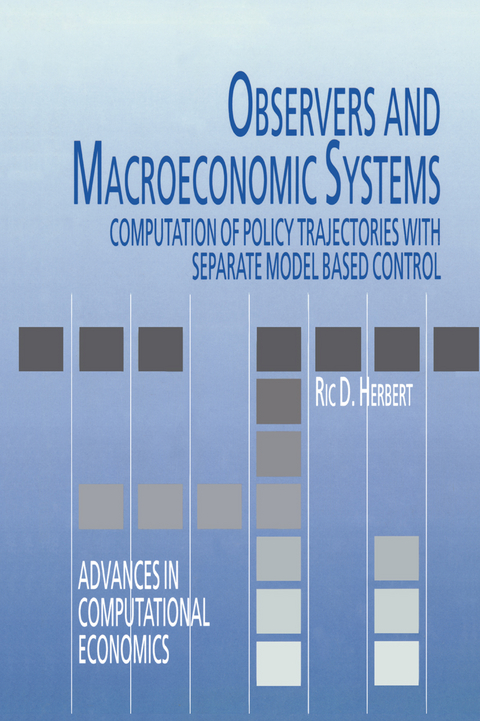
Observers and Macroeconomic Systems
Computation of Policy Trajectories with Separate Model Based Control
Seiten
1998
Springer (Verlag)
978-0-7923-8239-3 (ISBN)
Springer (Verlag)
978-0-7923-8239-3 (ISBN)
Observers and Macroeconomic Systems is concerned with the computational aspects of using a control-theoretic approach to the analysis of dynamic macroeconomic systems. It also shows how it can be used in conjunction with low-order models to undertake policy analysis with a large practical econometric model.
Observers and Macroeconomic Systems is concerned with the computational aspects of using a control-theoretic approach to the analysis of dynamic macroeconomic systems. The focus is on using a separate model for the development of the control policies. In particular, it uses the observer-based approach whereby the separate model learns to behave in a similar manner to the economic system through output-injections.
The book shows how this approach can be used to learn the forward-looking behaviour of economic actors which is a distinguishing feature of dynamic macroeconomic models. It also shows how it can be used in conjunction with low-order models to undertake policy analysis with a large practical econometric model. This overcomes some of the computational problems arising from using just the large econometric models to compute optimal policy trajectories.
The work also develops visual simulation software tools that can be used for policy analysis with dynamic macroeconomic systems.
Observers and Macroeconomic Systems is concerned with the computational aspects of using a control-theoretic approach to the analysis of dynamic macroeconomic systems. The focus is on using a separate model for the development of the control policies. In particular, it uses the observer-based approach whereby the separate model learns to behave in a similar manner to the economic system through output-injections.
The book shows how this approach can be used to learn the forward-looking behaviour of economic actors which is a distinguishing feature of dynamic macroeconomic models. It also shows how it can be used in conjunction with low-order models to undertake policy analysis with a large practical econometric model. This overcomes some of the computational problems arising from using just the large econometric models to compute optimal policy trajectories.
The work also develops visual simulation software tools that can be used for policy analysis with dynamic macroeconomic systems.
I Linear Systems.- 1: Introduction.- 2: Observers For Linear Rational Expectations Models.- 3: Low Order Dynamic Macroeconometric Models.- 4: Control Strategies for Attaining Ramp Output.- 5: Visualisation Techniques.- II Nonlinear Systems.- 6: Optimal Control with Nonlinear Models: Recent Studies.- 7: A Practical Macroeconometric Model.- 8: Linear Observer Based Control with the Nonlinear Macro-econometric Model.- 9: Nonlinear Observers.- 10: Conclusion and Further Work.- Appendix A: Software Engineering.
| Reihe/Serie | Advances in Computational Economics ; 8 |
|---|---|
| Zusatzinfo | XXIV, 309 p. |
| Verlagsort | Dordrecht |
| Sprache | englisch |
| Maße | 155 x 235 mm |
| Themenwelt | Mathematik / Informatik ► Mathematik ► Angewandte Mathematik |
| Wirtschaft ► Volkswirtschaftslehre ► Makroökonomie | |
| Wirtschaft ► Volkswirtschaftslehre ► Ökonometrie | |
| ISBN-10 | 0-7923-8239-0 / 0792382390 |
| ISBN-13 | 978-0-7923-8239-3 / 9780792382393 |
| Zustand | Neuware |
| Haben Sie eine Frage zum Produkt? |
Mehr entdecken
aus dem Bereich
aus dem Bereich
Buch | Softcover (2024)
Springer Vieweg (Verlag)
CHF 62,95
Anwendungen und Theorie von Funktionen, Distributionen und Tensoren
Buch | Softcover (2023)
De Gruyter Oldenbourg (Verlag)
CHF 97,90


